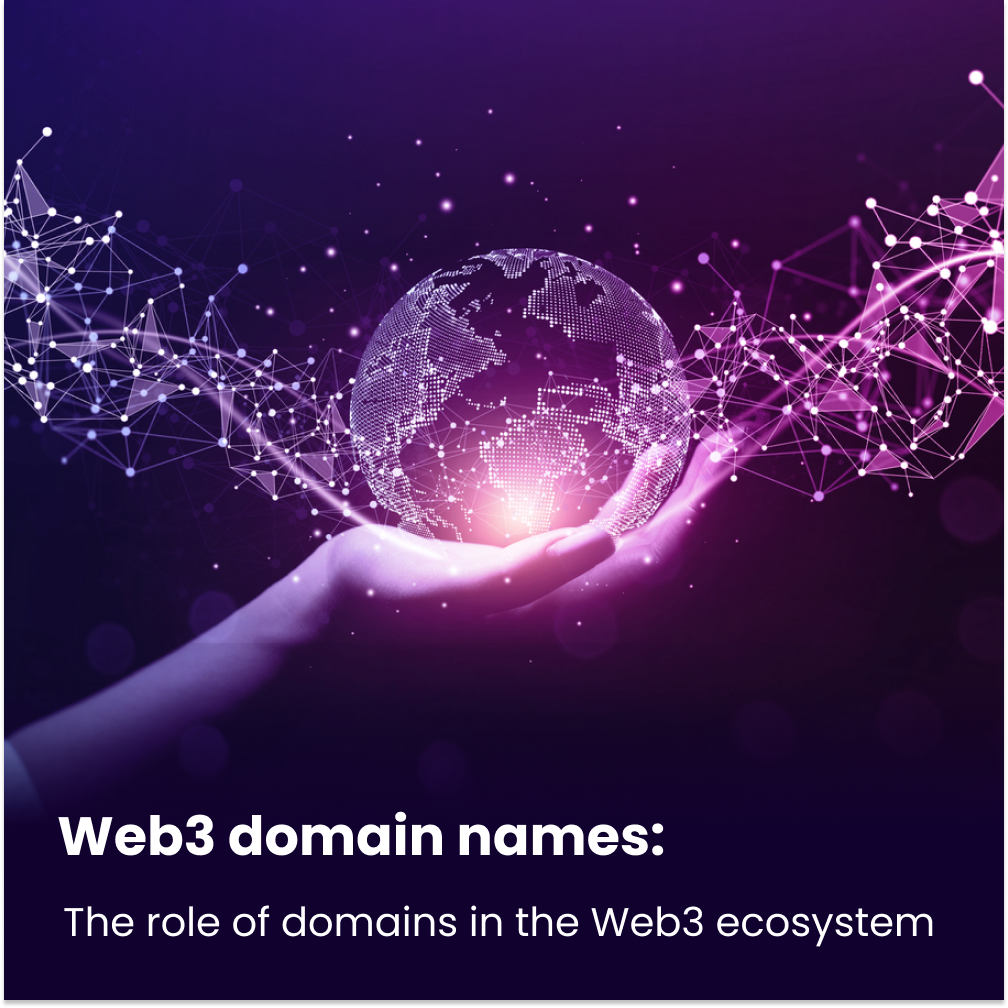
Estimated reading time: 6 minutes
The rise of Web3 has brought with it a renewed focus on the importance of domain names. With blockchain technology at the heart of this new decentralized internet, domain names play a crucial role in identifying and accessing digital assets and services. In the Web3 ecosystem, domain names act as gateways to decentralized content, platforms, and applications, making them a key element in the user experience and the overall success of the network. As such, understanding the role of domain names in Web3 is critical for anyone seeking to navigate this exciting new frontier of the internet.
In this article, we will dig deep into the concept of domain names in the Web3 ecosystem.
What are Web3 domains?
A web3 domain name is a type of domain that is registered on the Ethereum blockchain and serves as a means for accessing decentralized websites and applications (dApps) within the Ethereum network.
Unlike traditional domain names such as .com on Web2, web3 domains are not subject to centralized control. Instead, ownership of these domains can be transferred with ease by utilizing Ethereum’s built-in smart contract functionality.
By assigning a Web3 Domain to their wallet address, owners can easily remember their domain and use it to access their crypto wallet address or various decentralized websites.
By understanding the role of domain names in the Web3 ecosystem, we can see that domain names are at the heart of the whole ecosystem acting as gateways to decentralized content, platforms, and applications.
What is role of domain names in the Web3 ecosystem?
The role of domain names in the Web3 ecosystem is that they can offer multiple benefits within the larger web3 ecosystem.
For instance, domain names can simplify the process of sending and receiving crypto payments by replacing the need to remember complex addresses with a user-friendly option.
Additionally, a readable username associated with a blockchain domain name can enable easy access to dApps.
Another benefit is that a blockchain domain name can function as a digital identity, granting users control over their online reputation and presence.
Furthermore, web3 domains such as ENS and UD can represent multiple blockchain networks, facilitating the receipt of payments in different cryptocurrencies.
How do Web3 domains work?

In order to understand the role of domain names in the Web3 ecosystem, we need to grasp how they work.
Web3 domains function by associating a domain name with a specific smart contract address on a blockchain, such as Ethereum. This enables users to access decentralized resources, including crypto wallets, smart contracts, dApps, and other services through a human-readable domain name, rather than using lengthy and complicated smart contract addresses.
The smart contract contains a mapping of the web3 domain to the corresponding smart contract address. When a user inputs a web3 domain into a decentralized service, the application will retrieve the associated smart contract address from the smart contract. Once the user has obtained the address, they can interact with the smart contract and use the decentralized service or product.
For instance, if a user has a crypto wallet on Ethereum with the wallet address “abcdef123456,” they can link their wallet address with a web3 domain such as “mycryptowallet.eth” that they can purchase from ENS domains. By doing so, the user can simply share the “mycryptowallet.eth” domain with others instead of having to share the lengthy and hard-to-remember wallet address.
Why do you need a Web3 domain name?
Now that we have acquired an understanding of the role of Web3 domain names in the Web3 ecosystem, let’s discuss their benefits and use cases.
Web3 domain names provide more than just an online address; they offer a platform to showcase your work and create a personalized curriculum vitae.
These domains are ideal for artists, designers, coders, and other creatives who want to display their work in their own way. Since you own your web3 domain name, it can serve as a portfolio or resume that’s constantly updated.
What’s more, with a web3 domain name, you have the freedom to creatively monetize and own your content – something traditional domains, social media platforms, and content distributors cannot offer. If you’re looking to differentiate yourself online and establish a professional identity that’s uniquely yours, a web3 domain is the perfect solution.

Here are some of the benefits of Web3 domain names over traditional Web2 domains:
- Complete control over online identity: Unlike traditional domains, web3 domains can be owned by individuals or groups, and unique identifiers can be represented in digital token form.
- Cost-effective: Web3 domain names are budget-friendly since they don’t require a centralized registrar, making them much cheaper than traditional domains.
- Enhanced security: Stored on the blockchain, web3 domains cannot be tampered with or taken down, making them safe for hosting sensitive data or constructing censorship-resistant applications. They are also resilient to hacking as there is no central point of failure.
- Increased privacy: Unlike traditional domains that require personal information during registration, web3 domains can be registered anonymously, providing more online privacy.
- Future-proof: As the internet shifts towards a decentralized model, web3 domain names will continue to grow in popularity.
TPA domain names on Web3

In the Web3 realm, Teleport Plaque Address (TPA) offers an innovative method of domain ownership that differs from traditional approaches requiring centralized registries and third-party entities to securely manage and store domains.
TPA removes the need for intermediaries and enables the generation of domain names through a six-character code consisting of three letters and three numbers. These codes are then assigned to Web3 sites, facilitating easy navigation and personalized experiences within the Web3 domain.
Consequently, TPA presents an opportunity to streamline domain ownership, enhance security, and create a more customized web experience.
In decentralized networks of Spatial Computing, Teleport Plaque Address (TPA) is used to locate and access virtual worlds. Similar to a web address or URL, TPA is assigned to identify a specific location within a virtual world instead of connecting to a webpage. To explore, purchase, and utilize TPA, one option is to visit the Stage Meta website.








